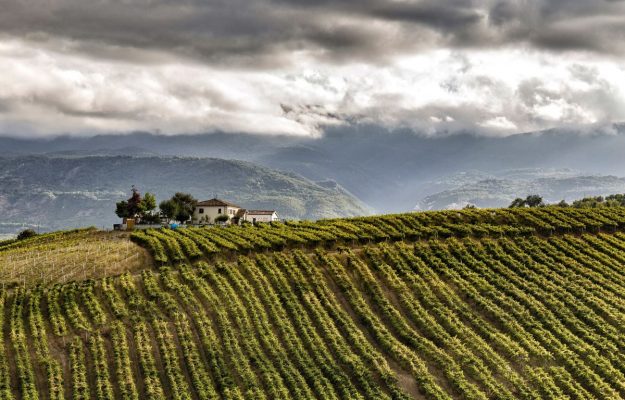The scenario described for Italian wine in 2023 has been uncertain and volatile, considering fluctuating costs, difficulty finding workers and the ever more impactful climatic events. However, interesting prospects are opening up for Italian wine on National as well as foreign markets, which the survey, conducted in the branches of the Intesa Sanpaolo bank specialized in agribusiness that according to many, instead, expect a generalized slowdown in turnover this year, but overall stable margins, at the end of “Vinitaly 2023” has confirmed. The Vinitaly 2023 event attracted a very high attendance of buyers from all over Italy as well as from all over the world (next year’s date is scheduled for April 14-17, 2024, ed.). Domestically, on the other hand, explained Intesa Sanpaolo, the sector will benefit from further recovery of post-Pandemic sociality and the enormous recovery of tourism and catering. Turnover in accommodation services grew +10% in 2022 compared to 2019, while for restaurants it grew +7%. On international markets, instead, results were good in 2022 (exports 7.9 billion euros, +10% at current values, stable quantity, and the United States as the leading commercial destination, totaling over 1.8 billion euros, +8% , ahead of Germany at 1.2 billion euros, +5%), and will continue to be supported by the excellent quality positioning of Italian wine (Italy is the leading country in Europe in PDO/PGI certifications: 526 certifications for wines. France follows at 437). Furthermore, the strong link with the territory and the wealth of biodiversity of our vineyards is unequaled around the world. According to a study carried out by OIV-International Organization of Vine and Wine, 75% of the Italian vineyard area is composed of as many as 80 different vines, twice as many as Portugal that has 40, while France and Spain have only 15.
There are, however, many opportunities that still need to be seized. The East, for instance, is a market that Italian wine needs to conquer. In China, our share of exports in terms of value is still very low, especially when compared to France, our main competitor. Our share for still wines is 2% compared to the French figure that is more than 13%. The Chinese market has enormous potential, not only because of the dimensions of the territory, but also due to the high recovery of activity after the particularly strict limitations imposed over the past three years, in an economy that in terms of GDP has not stopped, not even in 2020.
We also need to work on the correct price positioning of the Italian wine offer, Intesa Sanpaolo explained, which is still perhaps not very well rewarded compared to the quality it expresses. As a matter of fact, the average price of Italian PDO wines is significantly lower than the French. For instance, the average unit value of exports is around 38 euros per liter for PDO Reds from Bourgogne, while PDO Reds from Piedmont and Tuscany are around 10 euros per liter. The difference is even more extreme between Champagne (around 28 euros per liter) and Prosecco (around 4 euros a liter). Challenges in the future of wine will be driven by sustainability and digitalization. New energy could come from a generational turnover process, which is urgent in Italy, for almost one out of 10 wineries. And finally, it will be necessary to continue on a path of dimensional and capital strengthening, considering that in France more than 80% of wineries are more that 10 hectares in size, while in Italy only 50%.
“During “Vinitaly”, an excellent wine event to enhance the quality and success of our Country, in the eyes of the world in the food and wine sector, Intesa Sanpaolo”, commented Massimiliano Cattozzi, head of the Intesa Sanpaolo Agribusiness Department, counting more than 80.000 customers, approximately 13 billion euros in loans, 228 operating locations, 85 branches and 1.000 professionals in the area , “felt it necessary to open a dialogue on the future of companies in this sector. Through our Agribusiness Department, a center of excellence dedicated to agriculture that acts as a qualified interlocutor for the sector, our bank has taken substantial steps to give advice and offer our expertise also regarding the role that the new wine generations need to take on to respect traditions and seize the opportunities in corporate finance. The revolution of the agri-food sector, parallel to the wine world, is focusing on riding the digital, ecological transition, and in an even broader way, towards ever greater business sustainability. In this context, the contribution PNRR has offered is significant, as more than 2.000 of our client companies will obtain useful resources for the necessary transformation to continue being innovative and competitive, by predicting sector trends on the international level as well”.
Copyright © 2000/2025
Contatti: info@winenews.it
Seguici anche su Twitter: @WineNewsIt
Seguici anche su Facebook: @winenewsit
Questo articolo è tratto dall'archivio di WineNews - Tutti i diritti riservati - Copyright © 2000/2025









































































































































































































